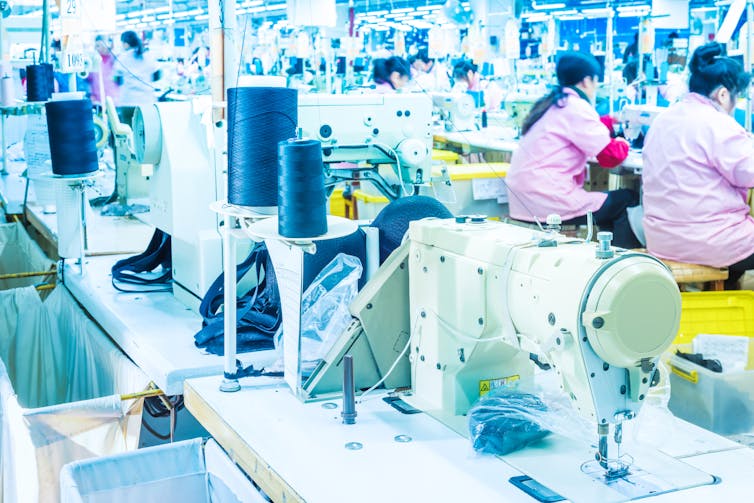
It’s an uncomfortable reality, but modern slavery is endemic in global supply chains.
Statistics on the scale of this issue are becoming as well known as they are shocking. Estimates put the number of modern slavery victims at almost 50 million globally – including those in forced labour or living in forced marriages. Of these, 17.3 million are being forced to work by private businesses, with nearly 4 million in forced labour imposed by state authorities. More than 3.3 million of those in forced labour are children.
The extent of the problem, coupled with the complexity of global supply chains, means that businesses (and consumers) in all sectors face a real risk of supporting modern slavery, knowingly or unknowingly.
And yet the proportion of large firms detecting and reporting modern slavery activity in their supply chains is low. For example, in its recent analysis of a sample of large firms with UK operations, investment company CCLA found that only 30 companies admitted to detecting modern slavery practices (or indications that it is present) in their supply chains.
Recent analysis by the BBC of tomato purees sold by UK supermarkets illustrates the scale of the problem.
While several UK supermarkets advertise own-brand tomato puree as “Italian”, the report concluded that most UK own-brands are likely to contain tomatoes grown in China. Picking tomatoes has been linked to the forced labour of Uyghur and other largely Muslim minorities whom the Chinese state views as a security risk.
The UK’s food-labelling regulations allows products to be labelled as originating from a particular country, such as Italy, as long as some aspect of processing occurs there.
Faced with the evidence, denial is the natural response due to reputational risk and the outrage that media coverage attracts. Unsurprisingly, the supermarkets named in the BBC investigation disputed the findings. And herein lies the problem with reporting and transparency as a tool for smashing the modern slavery cycle.
The view that corporate disclosure offers a solution to the modern slavery plague rests on the adage that “sunlight is the best disinfectant”. Transparency promotes scrutiny, which in turn drives out bad practice.
Accordingly, many jurisdictions require companies to report on modern slavery risks in their business and supply chains. In the UK, for example, section 54 of the Modern Slavery Act requires companies with UK operations and a turnover of at least £36 million to publish an annual statement on modern slavery and human trafficking.
In practice, however, the average quality of reporting falls short. In particular, while companies do a good job of describing general policies and processes, detailed analysis of clear targets for detecting evidence of slavery is scarce.
Instead, the majority of companies adopt an “all’s fine – nothing to see here” approach to reporting.
Inconsistency between the scale of modern slavery activity and low detection rates raises serious doubts over reporting as an effective tool. One possibility is that management is not looking hard enough. Another is “risk-washing” – where companies try to conceal or play down the risks modern slavery poses to their supply chain and business success. Either way, the effectiveness of the self-reporting governance model breaks down.
This is not surprising given the reputational risks facing companies and shareholders. Investors, consumers and the media greet evidence of modern slavery activity in a supply chain as unambiguous bad news. In contrast, no news implies such practices are entirely absent.
Really nothing to see here?
Given these reporting incentives and outcomes, it’s hardly surprising that self-detection remains the exception rather than the rule. And while inferring no risk from no detection is reasonable when dealing with rare events, it is not appropriate in the face of an endemic problem like modern slavery.
The reporting focus and responsibility needs to be flipped. Disclosures should attract appropriate scrutiny, but not outrage and shame by default. Detection is evidence of a well-functioning due-diligence process. We must avoid shooting the messenger.

Conversely, “nothing to see here” disclosures should attract the scepticism and scrutiny they deserve. This is particularly true when the reporting organisation’s suppliers operate in high-risk sectors (for example, agriculture or construction) and high-risk regions. Companies claiming a clear bill of health should be able to show evidence of rigorous due-diligence processes.
Companies also need practical tools to improve their detection and reporting practices. To support this shift in expectations, new technologies offer promising solutions.
Our research using large language models (LLMs) demonstrates how artificial intelligence can help transform modern slavery reporting from a box-ticking exercise into a meaningful assessment tool.
These models can analyse company statements with accuracy that resembles human expert evaluation. But crucially, instead of simply naming and shaming poor reporters, our tool provides constructive feedback aligned with best practices. This combination of better incentives and better tools could finally make supply chain reporting work as intended.
The path forward requires a fundamental shift in how we judge corporate behaviour. Modern slavery is endemic, and detecting it should be the norm, not the exception. When a supermarket finds forced labour in its tomato supply chain, this should be seen as evidence of robust due diligence, not corporate failure.
Companies operating in high-risk sectors must be required to demonstrate concrete detection efforts or provide detailed explanations for finding nothing.
Most importantly, investors, media and consumers need to reward rather than punish transparency. Without this shift in incentives, we perpetuate a system where wilful blindness is the rational choice for businesses – and millions of victims remain hidden in plain sight.![]()
Mahmoud Gad, Associate Professor, Accounting and Finance, Lancaster University and Steven Young, Professor of Accounting, Lancaster University
This article is republished from The Conversation under a Creative Commons license. Read the original article.
